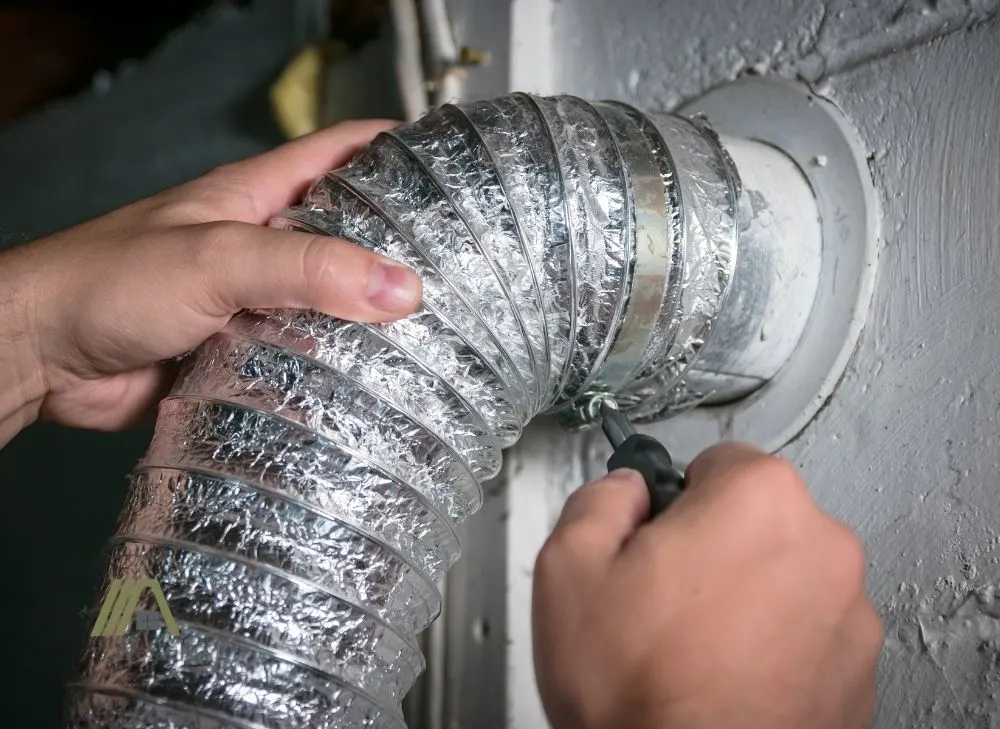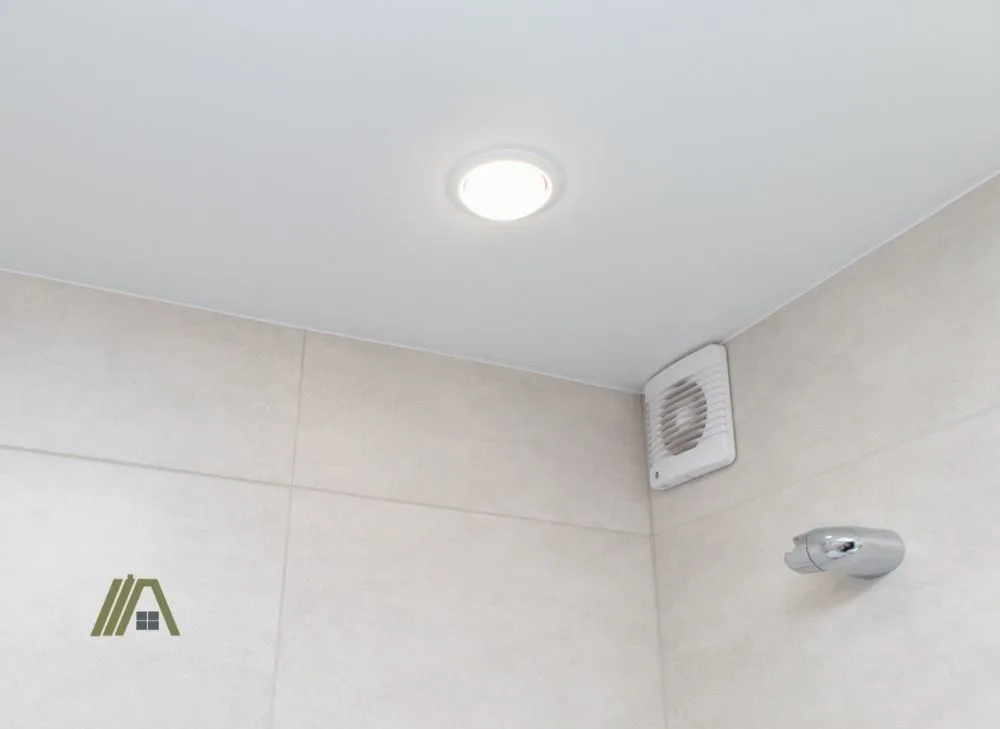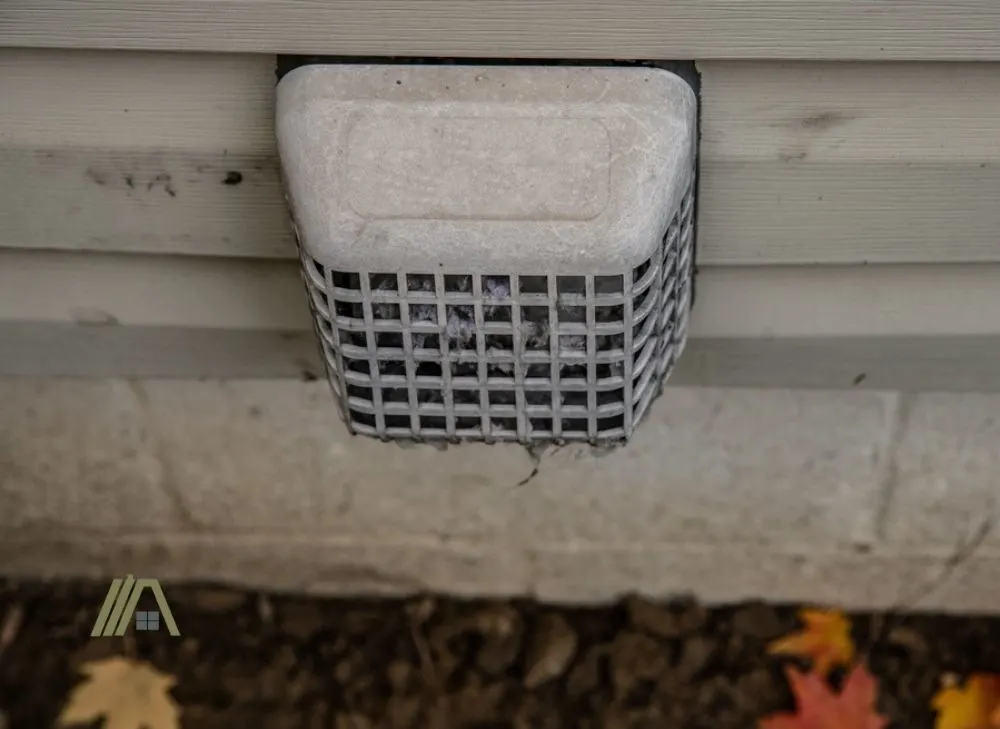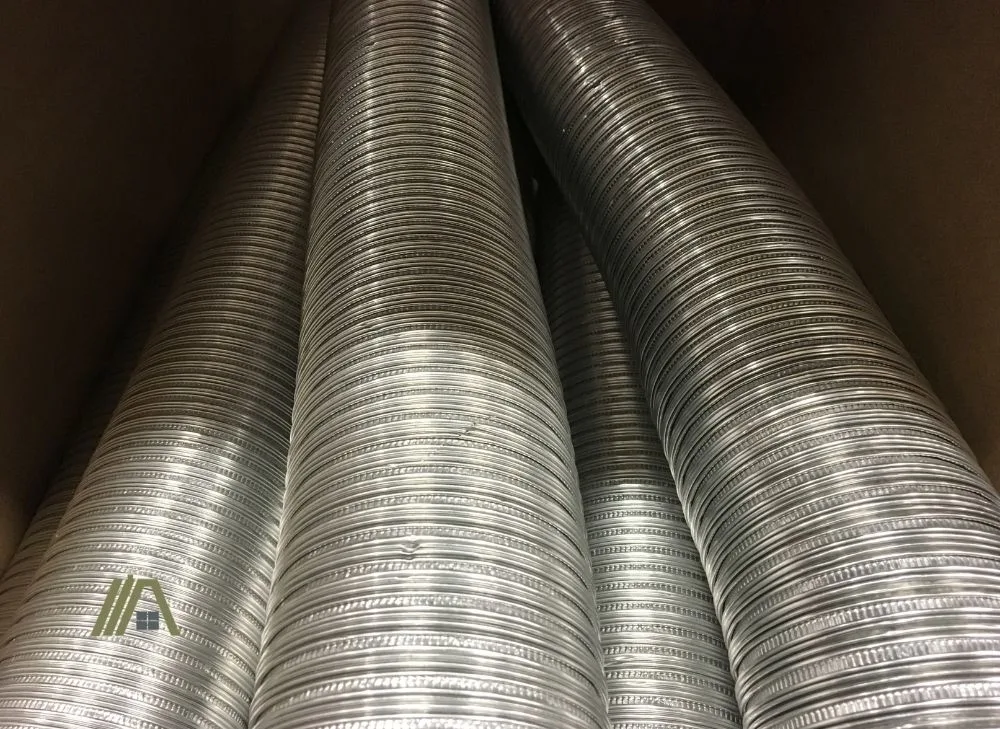You won’t find a police officer knocking at your door for violating dryer code regulations, but it’s important to make sure you follow these. That being said, oftentimes, consumers violate the building codes for dryers without even knowing. Many are very easy to avoid if you know what they are, so let’s get to it.

7 common dryer code violations are:
- Using dryer condenser boxes/indoor vent kits
- Not venting outside
- Using flexible duct
- Connecting the dryer and bathroom exhaust vents
- Installing a screen at the exit vent
- Using an overly long transition duct
- Exceeding the maximum allowable ducting length
1. Using Dryer Condenser Boxes/Indoor Vent Kits
While connecting your dryer to a condenser box or an indoor dryer vent kit may seem like a convenient alternative to venting, it’s important to remember that all dryers have to be vented to the exterior of your home. Section M1502.3 of the International Residential Code (IRC) states:
“Exhaust ducts shall terminate on the outside of the building.”
Not only does a condenser box violate the IRC by directing the exhaust into a box within the confines of the home, but it also doesn’t always function properly:
- Condenser boxes require the use of a properly fitted hose to carry the exhaust expelled from the dryer. A hose that is too small or too large is likely to allow leakages.
- Additionally, condenser boxes are often not large enough to hold the exhaust of multiple drying cycles. Again, this can lead to leakages resulting in humid air filling the room of the dryer.
The main problem with indoor vent kits is the fact that absolutely no heat or moisture is removed from the air by the kits and it is released into the room after lint has been filtered out.
Issues that extend beyond the actual use of a condenser box or indoor vent kit are also important to consider. For example, when in violation of building codes, insurance policies and house sales can become tricky.
Homes not in compliance with codes to keep the building safe are considered high risk and this will affect your premiums as well as decrease the price at which you can sell the home.
In order to follow building regulations, a proper ventilation and exhaust system will have to be installed for the dryer. If there aren’t proper venting systems in place, it’s best to call a professional so that it can be done correctly.
2. Not Venting Outside
Far too often, people think that if the dryer isn’t venting into a living space, it is perfectly acceptable. As such, they terminate the dryer duct pipe in places like the attic, crawl space, or garage, which are often more convenient than running the ducts all the way outside.

However, such venting violates IRC Section M1502.3 because these are not outdoor areas.
One of the biggest problems with venting into an attic, garage, crawl space, or any room is the amount of warm, moist air building up. Eventually, this could lead to structural damage as the framing of the house could begin to rot as well as the insulation being ruined.
A hot and humid unused room or space makes for an ideal home for all kinds of critters. Bees, wasps, roaches, mice, and in some cases even squirrels will spring to nest here. If left unchecked, these pests could damage your home by getting into the structure, wiring, insulation, or further down the ventilation.
Dryer exhaust also carries a good amount of lint. During a dry, hot summer, an attic or garage full of dryer lint is a fire waiting to start. Fires caused by lint are already fairly common in dryers that are properly ventilated, so it’s very important not to exhaust directly into the house.
In order to avoid these potential dangers, be sure that your dryer’s exhaust can be directed outside. Again, this may require the work of a professional, especially when the exhaust has to be led through the roof or a wall.
3. Using Flexible Duct
Using flexible ducts to vent a dryer is a common practice, especially when the dryer is situated in such a way that using rigid ducting is difficult. However, there are a number of issues with this, which is why Section M1502.4.1 of the IRC states:
“Exhaust ducts shall have a smooth interior finish and shall be constructed of metal….”
This section of the IRC explicitly calls for the interior of exhaust ducts to be smooth. This is so that the proper airflow can be maintained.

Flexible ducts have ribs and can crumple easily. This creates more friction and, therefore, more resistance to the airflow from the dryer. Lint build-up also becomes a concern when the air doesn’t flow properly. Moreover, lint can easily get caught in the grooves and curves of a flexible duct.
One of the biggest differences between flexible ducts and rigid ones and a strong motive for wanting to use flex ducts is that it takes less time and work to install. Flexible ductwork is lightweight and can bend and curve as needed. Flexible ducting is also much cheaper, making it even more appealing.
Although it’s more expensive and is more difficult to install, rigid ductwork is not only the code-compliant option but is also a much better investment in the long run. Rigid ductwork is made of sheet metal, making it stronger and more reliable than flexible ducting made of aluminum or foil material.
Transition ductwork can be made of a flexible material in order for the dryer to connect to the main exhaust system. Otherwise, all ducts for a dryer should be made of rigid sheet metal. Again, this is not an easy DIY project so a professional should be contacted when installing.
4. Connecting the Dryer and Bathroom Exhaust Vents
There are a multitude of reasons why a dryer and bathroom cannot share the same exhaust, including that it violates Section M1502.2 of the IRC. This regulation states:
“Dryer exhaust systems shall be independent of all other systems and shall convey the moisture to the outdoors.”
Essentially, this prohibits combining your dryer’s exhaust with the exhaust system in your bathroom fan, but why? Well, they are different.
First of all, dryers have cleaning requirements that are more strict than a bathroom’s exhaust fan. This is because a dryer’s duct must be kept clean in order to function safely and efficiently. Airflow issues and lint build-up can lead to mold and eventually become a fire hazard.
Secondly, bathroom exhaust fan vents, which have their own set of common venting errors, are allowed to utilize flexible ducting and PVC while, generally speaking, a dryer cannot.

Thirdly, exhaust from the dryer can very easily be released back into the bathroom through the fan. This leads to a build-up of humidity, moisture, and lint. If left unchecked, a bathroom fan can become clogged with lint leading to poor functionality.
In order to meet building regulations, be sure to install separate ductwork for the bathroom fan and dryer. Even if the laundry is located in the same room as the bathroom, separate systems are required.
5. Installing a Screen at the Exit Vent
Although backdraft dampers are required for termination ducts, screens are prohibited. The end of IRC Section M1502.3 states:
“Screens shall not be installed at the duct termination.”
This is specifically referring to the ducts of a dryer (screens on bathroom fan terminal vents are perfectly fine).

On a dryer’s terminal vent, screens become quite harmful to the function of the dryer and the safety of the home.
Much like many of the other code violations discussed, a screen is not allowed because it restricts airflow and can cause lint build-up. Screens easily catch lint and cause it to build up in the dryer ductwork as well as inside the dryer itself.
If a lint build-up becomes significant enough, it can reach the heating element of the dryer and start a fire. Even if screens were allowed, they would need to be monitored and cleaned out regularly to avoid a fire. In general, just a hassle.
Aside from the fire risks that screens pose, they also create significant inefficiencies in how the dryer functions. Again, this is caused by the restriction of airflow and lint build-up that force the dryer to work harder than it normally would to expel air.
These inefficiencies would become apparent on electricity bills.
It’s fairly easy to avoid this building code violation; don’t install a screen on your exhaust vent. If your vent for whatever reason already has a screen, it can be removed relatively easily.
6. Transition Duct Is Too Long
The transition duct is what connects the dryer to the exhaust duct system. Section M1502.4.3 of the IRC states:
“Transition ducts shall be not greater than 8 feet (2438mm) in length.”
Additionally, the IRC requires that the transition duct is a single length, meaning only one piece connects the dryer to the dryer’s exhaust, and it is to be listed and labeled in accordance with UL 2158A.

Generally speaking, a transition duct would have no reason to be over 8 feet since most of the time dryers are relatively close to an exhaust duct. However, if it were to be over 8 feet because you want your dryer in a different spot to where the pre-existing duct is located, there are a few concerns.
Unlike the exhaust duct, transition ducts are made of more flexible materials like aluminum or foil in order to curve and fit behind the dryer. Along with the flexibility of the duct are the curves, grooves, and potential to kink and clog.
For many of the same reasons the flex duct isn’t allowed for exhaust vents, a transition duct cannot exceed 8 feet. More grooves and curves mean restricted airflow and the build-up of lint. This causes inefficiencies in the operation of the dryer.
Lint build-up can lead to mold and once dry presents a fire hazard. The transition duct is connected directly to the dryer so blockages there would cause serious damage to the dryer.
To avoid this violation, the only way is to place your dryer in a place where it can easily access the exhaust vent. Not all houses are built equally, so be sure to contact a professional if you find yourself in a situation where the transition duct will exceed 8 feet.
7. Not Paying Attention to Maximum Allowable Length
Finally, the maximum allowable length of a dryer duct is another commonly overlooked aspect. According to Section M1502.4.6.1 of the IRC:
“The maximum length of the exhaust duct shall be 35 feet (10 668 mm) from the connection to the transition duct from the dryer to the outlet terminal.”
It should be noted that any 90-degree turns in the ventilation decrease the maximum length of 35 feet by 5 feet. Also, there are additional stipulations when dryer fittings are used which can be found in Table M1502.4.6.1.
As was the case with many of the regulations, this one is in place to ensure that dryers run safely and efficiently.
Ideally, a dryer’s exhaust duct should be as straight and short as possible. The goal of the exhaust is to take the shortest path to the exterior of the house. The shorter and straighter the path the better the airflow will be.
If this guideline is not followed, not only will your dryer work harder than it needs to, but the greater the risk for restricted airflow and lint build-up will be. 90-degree turns should be avoided the most, which is why they decrease the maximum length so significantly.
To make sure that your dryer venting system does not contravene the code, you need to know what the code actually states.
Sometimes the regulations are not expressed in plain English or there is little explanation as to why the rule exists. To help you, I have compiled a comprehensive and easy-to-understand guide.
Gas Dryer | Do You Need a Plumber for the Install? (Code rqmts).
Sources
https://homeguides.sfgate.com/can-dryer-vent-up-through-attic-89540.html
https://calawayair.com/2021/02/flexible-vs-metal-ductwork-which-should-you-choose/
https://planetduct.com/remove-dryer-vent-screens/
https://structuretech.com/dryer-duct-safety/
https://www.nachi.org/dryer-vent-safety.htm
https://codes.iccsafe.org/content/IRC2021P1/chapter-15-exhaust-systems#IRC2021P1_Pt05_Ch15_SecM1502
